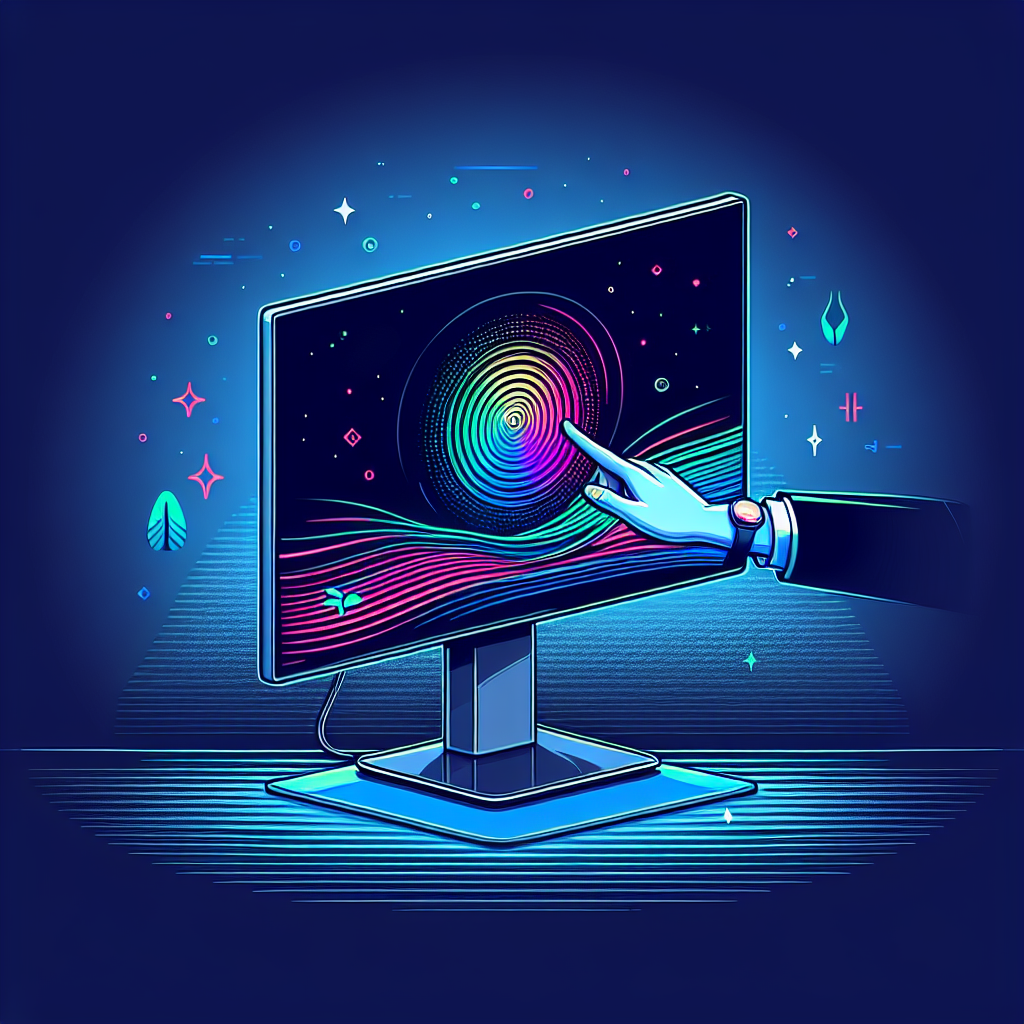Are there OLED monitors with touchscreens?
OLED monitors with touchscreens combine the vibrant display technology of OLED with the interactive capabilities of touchscreens. This brings a unique experience to users by merging stunning visuals with hands-on control, making these monitors a valuable asset in various settings such as creative work, gaming, and professional applications.
| Feature | Benefit |
|---|---|
| OLED Technology | Delivers deep blacks, high contrast, and vibrant colors |
| Touchscreen Capability | Offers interactive functionality and intuitive control |
| Wide Viewing Angles | Maintains color accuracy from different angles |
What is OLED Technology?
OLED (Organic Light Emitting Diode) technology stands out for its ability to emit light individually from each pixel, which results in deeper blacks and higher contrast compared to traditional LCD screens. The self-lighting pixels don’t require a backlight, allowing for thinner, lighter display panels that provide excellent color accuracy and wide viewing angles.
Advantages of OLED Monitors
- Superior Color and Contrast: OLED monitors offer exceptional color reproduction and higher contrast ratios.
- Energy Efficiency: OLED screens consume less power, especially when displaying dark images.
- Thinner and Lighter: The absence of a backlight allows these monitors to be more compact.
- Faster Response Times: OLED technology enables quicker refresh rates, reducing motion blur in fast-action scenes.
Integrating Touchscreen Functionality
Adding touchscreen capability to OLED monitors enhances user interaction by allowing direct manipulation of the screen. This is particularly beneficial for designers, graphic artists, and anyone who prefers hands-on control over their digital environment.
Benefits of Touchscreen OLED Monitors
- Interactive Experience: Touchscreens facilitate a more immersive and interactive user experience.
- Increased Productivity: Touch controls can streamline workflows and make certain tasks faster and easier.
- Enhanced Creativity: Artists and creatives can directly draw or manipulate on-screen content using touch inputs.
Available OLED Touchscreen Monitors
While OLED technology has been prevalent in TVs and smartphones, its application in monitors, especially those with touchscreens, has been more limited but is gradually expanding. Here are some notable examples:
- Asus ProArt PQ22UC: A portable OLED monitor with a 21.6-inch screen, 4K resolution, and touch capability. It targets professional creatives with its high color accuracy and portability.
- Dell UP3017Q: A 30-inch 4K OLED monitor with excellent color reproduction and wide viewing angles, suitable for professional use, though it does not have touchscreen functionality.
- HP DreamColor Z31x: Another high-quality OLED monitor aimed at professionals, featuring a 31.5-inch screen and accurate color rendering but lacking touch capability.
Suitability for Different Use Cases
For Creative Professionals
Creative professionals like graphic designers, video editors, and animators benefit significantly from OLED touchscreen monitors due to the superior color accuracy and the ability to interact directly with the display. This direct manipulation can enhance precision and streamline creative workflows.
For Gamers
Gamers can experience deeper immersion with OLED displays due to the high contrast and vibrant color. Touchscreen capabilities can add another layer of interaction in games that support touch input.
For Business and Professional Use
In business settings, OLED touchscreen monitors can improve productivity by making navigation and interaction with applications more intuitive. Presentations and collaborative work become more engaging and effective with touch inputs.
Challenges and Considerations
Despite their many advantages, OLED touchscreen monitors come with certain challenges. One of the primary concerns is the higher cost compared to traditional monitors. Additionally, OLED screens are prone to image retention and burn-in if static images are displayed for prolonged periods.
Cost
The advanced technology behind OLED screens and the addition of touch functionality contribute to higher prices. As the technology becomes more widespread, prices are expected to decrease, making these monitors more accessible over time.
Burn-In
While OLED screens offer stunning visuals, they can suffer from burn-in, where static images leave a permanent mark on the display. This is a critical consideration for users who display static content frequently.
Future Prospects of OLED Touchscreen Monitors
The future of OLED touchscreen monitors looks promising as technology advances and demand increases. We expect to see more models entering the market with improved durability, reduced costs, and enhanced features.
Technological Advances
Ongoing research and development in OLED technology aim to mitigate issues like burn-in and further enhance energy efficiency and display quality.
Market Expansion
As manufacturers see the growing demand for high-quality displays with interactive capabilities, more options will become available. This expansion will likely lead to competitive pricing and broader adoption across various industries.
In conclusion, OLED monitors with touchscreens are a powerful combination that offers superb visual quality and interactive functionality. Whether for creative professionals, gamers, or business use, these monitors provide numerous benefits that are bound to grow as the technology evolves and becomes more accessible.

